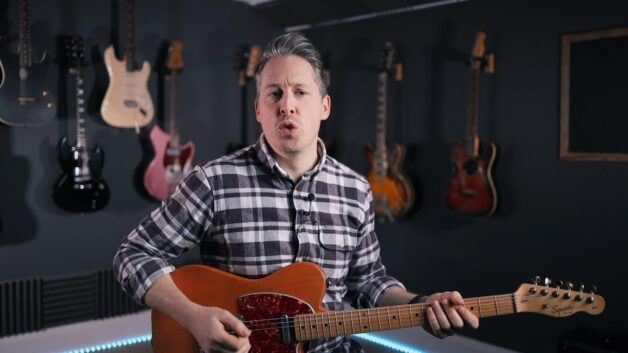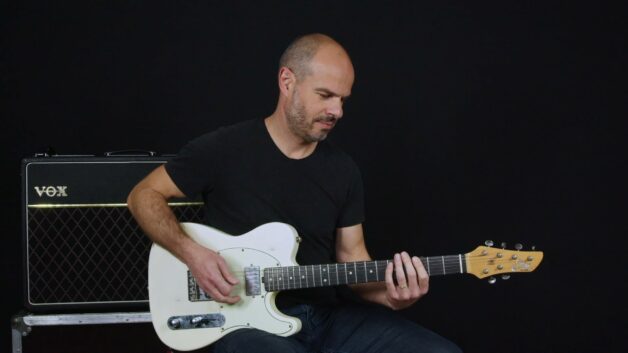Mastering Strumming Exercises on Guitar: A Beginner’s Guide
Key Takeaways:
- Keeping your strumming hand in constant motion is essential for smooth rhythm.
- Understanding eighth-note and sixteenth-note strumming will improve your timing and groove.
- Practicing ghost notes helps develop a natural feel and fluidity in strumming patterns.
- A universal strumming pattern (down, down, up, up, down, up) can be applied to many songs.
Why Strumming Matters More Than You Think
Strumming is the backbone of rhythm guitar, yet it’s often overlooked by beginners eager to jump into playing full songs. The reality? If your strumming isn’t solid, even the simplest chords won’t sound right. A well-developed strumming technique ensures your playing feels fluid and natural. Something that separates beginners from more experienced players.
Many new guitarists struggle with keeping time. The key is to maintain constant hand movement, even when not hitting the strings. It’s the same principle drummers follow: the motion never stops, ensuring smooth transitions and a steady beat. If you’ve ever listened to classic tracks by artists like Bob Dylan or Johnny Cash, you’ll notice their right-hand movement never hesitates, no matter the tempo.
Learning the Universal Strumming Pattern
If you only learn one strumming pattern at the start, make it this one: down, down, up, up, down, up, for the strums that hit the strings, you need to insert the missing (ghost) strokes in the air to maintain a consistent motion.. It’s an incredibly versatile rhythm that works across genres, from folk and pop to rock and country. Here’s how to get comfortable with it:
- Start by holding an E minor chord. It’s a simple shape that lets you focus entirely on your right hand.
- Strum down, down, up, up, down, up at a slow, even pace.
- Pay attention to your wrist movement. Keep it loose and relaxed.
- Gradually increase speed, making sure each stroke lands cleanly.
A common mistake? Stopping hand movement between strums. This disrupts the rhythm, making your playing sound choppy. Even when you’re not hitting the strings, your hand should keep moving as if playing ghost notes. Imagine tapping your foot to the beat. It keeps you anchored, just like your strumming hand.
Mastering Eighth-Note and Sixteenth-Note Strumming
Understanding rhythmic subdivisions is crucial to developing a strong groove. Most beginners start with eighth-note strumming, counted as: “1 and 2 and 3 and 4 and”. This means your strumming hand moves eight times per measure. Many iconic songs, like “Knockin’ On Heaven’s Door” by Bob Dylan, rely on this rhythm.
For a tighter, more energetic feel, we move into sixteenth-note strumming, counted as: “1 e and a 2 e and a 3 e and a 4 e and a”. This allows for faster, more percussive strumming without increasing the song’s tempo. Think of funk or reggae: those genres rely heavily on precise sixteenth-note patterns.
A simple exercise to develop both techniques:
- Strum eighth notes on an E minor chord, emphasizing the downbeats.
- Switch to sixteenth notes at the same tempo, keeping your wrist loose.
- Alternate between the two, listening for the difference in feel and attack.
Common Pitfalls and How to Fix Them
Many beginners hit roadblocks when learning strumming, but the good news is most mistakes are fixable. Here are a few frequent issues and how to correct them:
- Rushing or dragging the beat: Practice with a metronome to build internal timing.
- Over-gripping the pick: A tight grip leads to a stiff, unnatural strumming motion. Hold the pick loosely for better control.
- Ignoring dynamics: Strumming isn’t just about rhythm, it’s about feel. Try accenting certain beats (e.g., the second “down” in our universal pattern) to add musicality.
- Skipping ghost notes: Even when you’re not striking the strings, your hand should keep moving to maintain the groove.
Taking Your Strumming to the Next Level
The journey to mastering strumming exercises on guitar is about consistency and patience. Experiment with different rhythms, play along with your favorite songs, and record yourself to track progress. Over time, your strumming will become second nature, allowing you to focus more on chord changes, melody, and expression.
Strumming might not be the flashiest aspect of guitar playing, but it’s one of the most important. Get it right, and everything else will fall into place.






